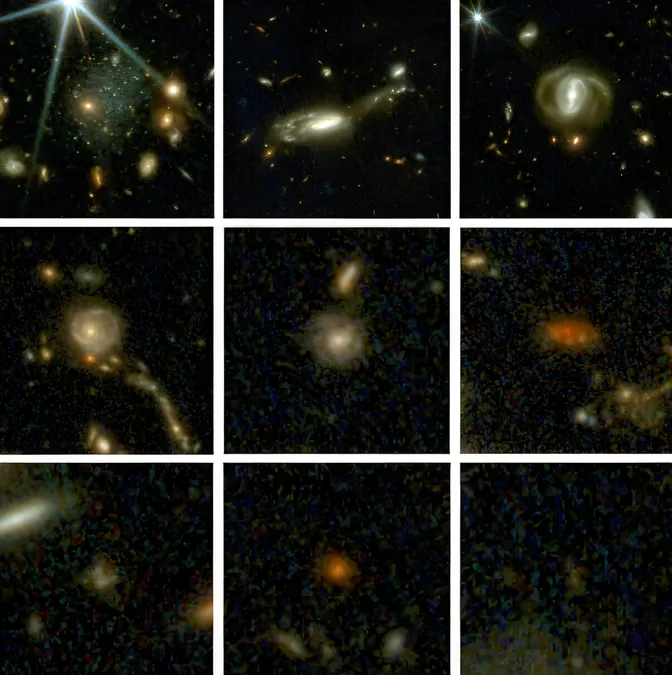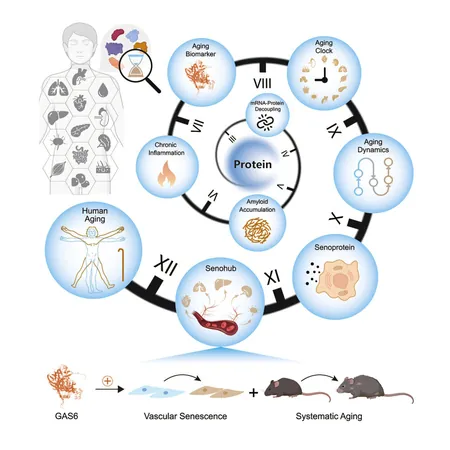
Unveiling the Universe: The Largest Galaxy Map Reveals 800,000 Cosmic Wonders
2025-06-10
Author: Noah
A Groundbreaking Discovery in Astronomy
In a monumental leap for open science, an international collaboration of researchers has unveiled the most extensive and detailed map of the universe ever created. This remarkable project, known as COSMOS-Web, encapsulates nearly all of cosmic history in an incredible dataset.
Harnessing the Power of the James Webb Space Telescope
Utilizing data from the James Webb Space Telescope (JWST), this newly released map showcases images and a catalog of nearly 800,000 galaxies. The brains behind this awe-inspiring endeavor include scientists from UC Santa Barbara and the Rochester Institute of Technology, who collaboratively painted a panoramic view that radically redefines our understanding of galaxy formation.
An Unprecedented Scale of Observation
According to Professor Caitlin Casey, co-lead of the COSMOS-Web initiative, the scale of this project is strikingly vast. "If you printed the Hubble Ultra Deep Field on standard paper, our image would be akin to a colossal 13-foot by 13-foot mural, at the same depth. It's truly immense!"
Gazing Back 13.5 Billion Years
This cosmic map captures the universe as it existed approximately 13.5 billion years ago, which is a staggering 98% of its entire history. The aim wasn't merely to identify distant galaxies; the team sought to understand the very environments that birthed the first stars, galaxies, and black holes.
Shattering Expectations with New Findings
Prior to JWST's observations, astronomers believed that galaxies formed within the first 500 million years post-Big Bang would be scarce. However, Professor Casey notes that JWST has revealed nearly ten times more galaxies than anticipated at these immense distances. The implications are staggering—supermassive black holes not even visible with Hubble are now coming to light.
More Questions than Answers
Though this dataset represents one of the clearest views of the early universe, it also opens a Pandora's box of questions. According to Professor Casey, scientists are pondering whether these findings challenge existing cosmological models. The universe seems to have produced an overwhelming amount of light far earlier than theorized, raising pivotal questions about how such phenomena could occur.
Democratizing Cosmic Exploration
This initiative symbolizes a significant shift in astronomical research. By publishing this extensive universe map, the team aims to inspire global discoveries among astronomers. "Democratizing science by making high-quality data accessible to a diverse audience is a cornerstone of this project," Casey affirmed. The previously raw data has now been refined, making it user-friendly for budding astronomers.
What Lies Ahead?
The quest for knowledge does not end here. The COSMOS team is gearing up for further data collection, with hopes of pinpointing the earliest galaxies depicted on the map. Utilizing spectroscopy, they plan to measure the exact distances and ages of these celestial bodies, which will further illuminate the universe’s intricate interstellar chemistry.
As more discoveries await in the cosmos, the COSMOS-Web project continues to unravel the universe's mysteries. Discover the map for yourself; it's available for interactive exploration.
In the Spotlight
This groundbreaking research has been published in the Astrophysical Journal and Astronomy & Astrophysics. Stay tuned for more revelations from the final frontier!









 Brasil (PT)
Brasil (PT)
 Canada (EN)
Canada (EN)
 Chile (ES)
Chile (ES)
 Česko (CS)
Česko (CS)
 대한민국 (KO)
대한민국 (KO)
 España (ES)
España (ES)
 France (FR)
France (FR)
 Hong Kong (EN)
Hong Kong (EN)
 Italia (IT)
Italia (IT)
 日本 (JA)
日本 (JA)
 Magyarország (HU)
Magyarország (HU)
 Norge (NO)
Norge (NO)
 Polska (PL)
Polska (PL)
 Schweiz (DE)
Schweiz (DE)
 Singapore (EN)
Singapore (EN)
 Sverige (SV)
Sverige (SV)
 Suomi (FI)
Suomi (FI)
 Türkiye (TR)
Türkiye (TR)
 الإمارات العربية المتحدة (AR)
الإمارات العربية المتحدة (AR)